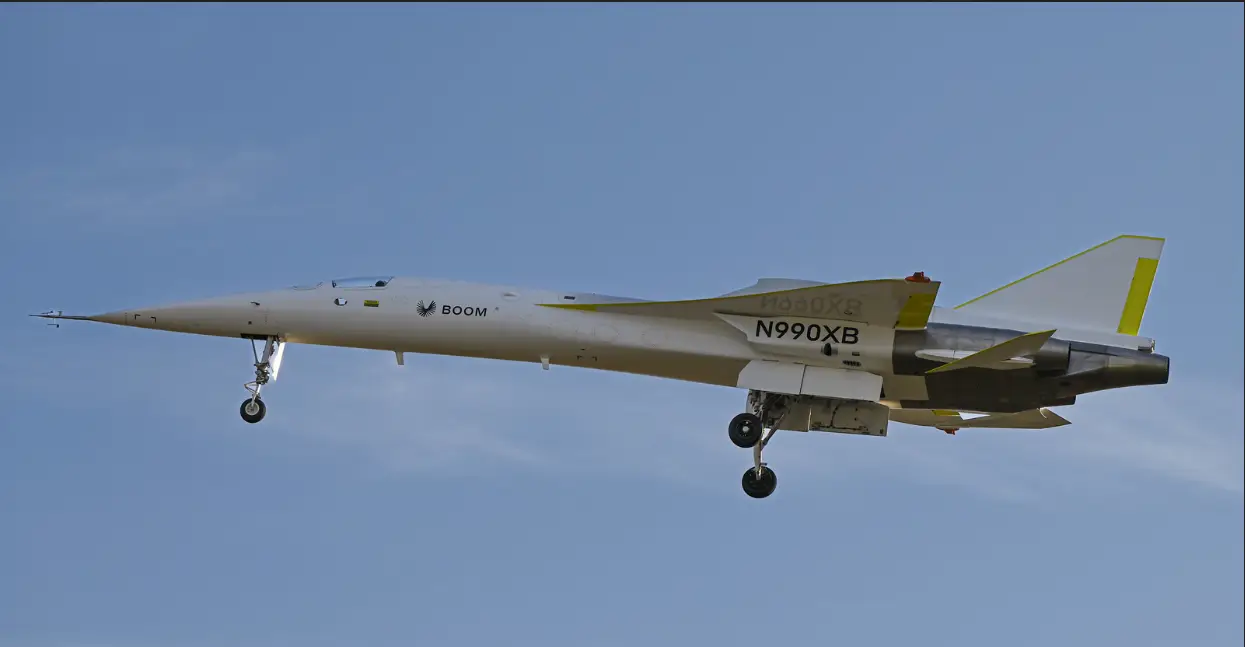In a breakthrough moment for civilian aviation, the XB-1 demonstration aircraft successfully achieved supersonic flight on January 28, 2024, marking a significant step toward the return of faster-than-sound commercial travel. This achievement, taking place at California’s Mojave Air & Space Port, represents the first civil supersonic flight over the continental United States and hints at an imminent transformation in how we approach long-distance travel.
Revolutionary Test Flight Success
The sleek XB-1, featuring its distinctive blue-and-yellow tail assembly, demonstrated remarkable performance during its twelfth test flight. Under the skilled guidance of chief test pilot Tristan “Geppetto” Brandenburg, the aircraft completed three separate supersonic runs, reaching speeds of Mach 1.11 at an altitude of 35,000 feet. This multiple-run approach provided crucial data about the aircraft’s stability and handling characteristics at supersonic speeds.
Transforming the Future of Air Travel
The successful test flight represents more than just a technical achievement – it signals the potential renaissance of commercial supersonic travel. Since the retirement of the Concorde in 2003, supersonic flight has remained exclusively in the military domain. However, this latest breakthrough suggests a new chapter in aviation history is about to unfold.
Impact on Commercial Aviation
- Potential reduction in intercontinental travel times
- Development of more fuel-efficient supersonic technology
- Creation of new market opportunities for airlines
- Enhanced competition in the premium travel sector
Next Generation of Supersonic Aircraft
The insights gained from the XB-1 test program are already shaping the development of Supersonic’s ambitious Overture airliner project. This full-scale commercial aircraft aims to revolutionize long-distance travel with
Overture Specifications and Timeline
- Advanced aerodynamic design for Mach 1.7 cruise speed
- Innovative passenger cabin accommodating 80 travelers
- Production initiation planned for 2024
- Target for commercial operations by 2029
Industry-Wide Innovation Wave
The XB-1’s achievement has catalyzed broader industry developments in supersonic travel technology. Multiple organizations are now accelerating their own supersonic programs:
Current Development Programs
- NASA’s X-59 program focusing on minimizing sonic boom impact
- Dawn Aerospace’s alternative approach to high-speed flight
- Various international collaborations exploring supersonic technology
Environmental and Economic Considerations
The revival of supersonic travel raises important questions about sustainability and economic viability. Modern designs like the XB-1 incorporate significant technological advances aimed at addressing these concerns:
- Enhanced fuel efficiency compared to previous aircraft
- Reduced noise pollution through advanced aerodynamics
- Focus on sustainable aviation fuel compatibility
- Balance between speed and environmental impact
Collaborative Future
The announcement of potential collaboration between Boom Supersonic and NASA adds another exciting dimension to this achievement. This partnership could combine the XB-1’s proven capabilities with NASA’s sonic boom reduction technology, potentially solving one of the key challenges that faced previous supersonic passenger aircraft.
Market Response and Industry Support
The aviation industry has responded positively to these developments, with major carriers already showing strong interest in supersonic technology:
- United Airlines and American Airlines placing early orders
- Growing interest from other international carriers
- Increased investment in supporting infrastructure
- Development of specialized maintenance and training programs
This historic achievement by the XB-1 represents more than just a successful test flight – it marks the beginning of a new era in aviation, where supersonic travel could once again become a practical option for commercial passengers, but this time with advanced technology, improved efficiency, and broader accessibility.
Sources: Space.com, New Scientist

